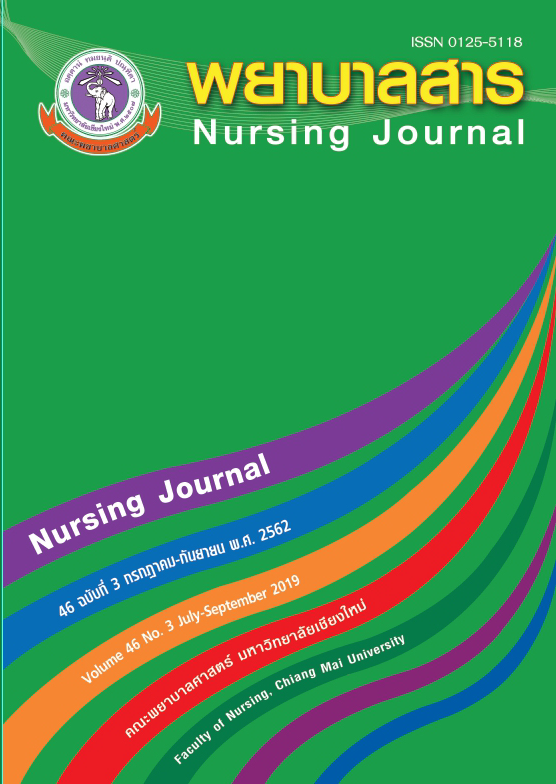Chronic Sorrow and Management Strategies Among Mothers of Preterm Infants with Retinopathy of Prematurity
Keywords:
Management Strategies, Chronic Sorrow, Preterm Infants, Retinopathy of PrematurityAbstract
Caring for premature infants with retinopathy of prematurity (ROP) requires continuity for an extended period of time. This situation may lead mothers to have chronic sorrow. The purpose of this descriptive study was to explore the level and management of chronic sorrow among mothers of preterm infants with ROP. The participants included sixty mothers of preterm infants with ROP, discharged from hospital within the last 2 months. The research instruments included the Demographic Data Form, the Chronic Sorrow Assessment Questionnaire and Management of Chronic Sorrow Questionnaire. Data were analyzed using descriptive statistics.
The results of the study showed that:
The mothers of premature infants with ROP had chronic sorrow at a moderate level, with their management strategies of chronic sorrow being at a moderate level. Management strategies of chronic sorrow were as follows.
- 1. The internal management method: The mothers chose the items of “take a can-do attitude,” “talk with a health professional,” and “talk to someone close to me”.
- The external management method: The mothers sought help from professionals, and family and friends in the following ways;
2.1. To get help from health care professionals, the mothers chose the items of “answer me honestly,” “take their time with me,” and “provide good care.”
2.2. To get help from family and friends, the mothers chose the items of “offer a helping hand,” “provide emotional support,” and “listen to me.”
These findings could be used by health care providers as preliminary data for developing guidelines for providing information to mothers about preterm ROP. This could also be used with their significant others. This could achieve better results of care provision for mothers of preterm infants with ROP.
References
Chontawan, R., Mesukko, J., Urtharmnuay, M., & Sirakamol, D.(2001). Retinopathy of Prematurity: The Moth’s Experience. Chiang Mai: Faculty of Nursing Chiang Mai University. (In Thai)
Cole, C., Fielder, A., & Schulenburg, E. (2005). Management of retinopathy of prematurity.
Current Pediatrics, 15, 99-105.
Eakes, G. G., Burke, M. L., & Hainsworth, M. A. (1998(. Middle range theory of chronic sorrow. Image: Journal of Nursing Scholarship, 30)2(, 179-184.
Filho, J.B., Bonomo, P.P., Maia, M., &Procianoy, R.S. (2009). Weight gain measured at 6 week after birth as a predictor for severe retinopathy of prematurity: Study with 317 very low birth weight preterm babies. Graefe's Archive Clinical and Experimental Ophthalmology, 247, 831-836.
Franck, L.S., Cox, A., Allen, A., & Winter, I. (2005). Measuring neonatal intensive care unit- related parental stress. Journal of Advanced Nursing, 49(6), 608-615.
Fraley, A.M. (1986). Chronic sorrow in parents of premature children.Children’s Health Care, 15(2), 114-118.
Grewal, J.S., & Fielder, A.R. (2012). Sequelae of retinopathy of prematurity.Pediatrics and Child Health, 22(1), 19-24.
Hinsin, C.(2006). Maternal participation in caring for high-risk neonates. Thesis Master of Nursing Science (Pediatric Nursing), Graduate School, Chiang Mai University. (In Thai)
Hobdell, E.F. (2004). Chronic sorrow and depression in parents of children with neural tube defects, Journal of Neuroscience Nursing, 36(2), 82-94.
Husain, S.M., Sinha, A.K., Bunce, C., Arora, P., Lopez. W., & Mun, K.S., Adams, G.G. (2013). Relationships between maternal ethnicity, gestational age, birth weight, weight gain, and severe retinopathy of prematurity. The Journal of Pediatrics, 1-6. doi: 10.1016/j.jpeds.2012.12.038
Kelly, M.M. (2006). The basics of prematurity. Journal of Pediatric Health Care, 20(4), 238-244.
Kuerschner, D.R. (2003). Does my child really need to wear these glasses? A review of retinopathy
of prematurity and long-term outcome. Newborn and Infant Nursing Review, 3(3),110-117.
Lad, E.M., Hernandez-Boussard, T., Morton, J.M., &Moshfeghi, D. (2009).Incidence of retinopathy of prematurity in the United States.American Journal of Ophthalmology, 148(3), 45-458.
Lowdermilk, D.L., Perry, S.E., Cashion, K., & Alden, K.R. (2012). Mental health disorders and subalance abuse in pregnancy. Maternal & Women's Health Care. (10thed.). St. Louis: Mosby.
Lowes, L., & Lyne, P. (2000). Chronic sorrow in parents of children with newly diagnosis diabetes: A review of the literature and discussion of the implications for nursing practice. Journal of Advanced Nursing, 32(1), 41-48.
Murray,S.S., & Mckinney, E.S. (2010). Foundations of maternal– newborn and women's health nursing. (5thed.). Philadelphia: W.B. Saunders.
Parker, L. (2010). Mothers’s experience of receiving counseling / psychotherapy on a neonatal intensive care unit (NICU). Journal of Neonatal Nursing, 2, 1-8.
Peterson, S.J., & Bredow.T.S. (2009). Middle Range Theories (2nded.). St. Paul, Minnesota: Philadelphia.
Photanun, P. (2012). Materal Participation in Caring for Preterm infants in Neonatal Intensive care unit and Related Factors. Thesis Master of Nursing Science (Pediatric Nursing), Graduate School, Chiang Mai University. (In Thai)
Rungamornrat, S., Karnjanawanich, W., & Muangyoo, U. (2012). Maternal participation in caring for a premature infant with respirator. Journal of Nursing Science, 30(4), 49-60.
Scornaienchi, J.M. (2003). Chronic sorrow: One mother’s experience with two children with lissencephaly. Journal of Pediatric Health Care, 17, 290-294.
Srisatidnarakul, B. (2010).The Methadology in Nursing Research. (5thed.). Faculty of Nursing Chulalongkorn- University. Bankok. U&I Intermidia. (In Thai)
Stoll, B.J., Hansen, N.I., Bell, E.F., Shankaran, S., &Laptook, A.R. (2010). Neonatal outcomes of extremely preterm infants from the NICHD neonatal research network. Pediatrics, 126(3), 443–456.
Vale, I.N., Souza, S.R., & Carmona, E.V. (2005). Nursing diagnosis identified during parent group meetings in a neonatal intensive care unit. International Journal of Nursing Terminologies and Classification, 16 (3-4), 65-73.
Vitale, S.A., & Falco, C. (2014). Children born prematurety: Risk of parental chronic sorrow. Journal of Pediatric Nursing, 29, 248-251.
Wacharasin,C. (2007). Theoretical foundations for advanced family nursing. Faculty of Nursing Burapha University. Chonburi; Chonburi Printing. (In Thai)
Downloads
Published
How to Cite
Issue
Section
License
บทความที่ได้รับการตีพิมพ์เป็นลิขสิทธิ์ของวารสารพยาบาลสาร
ข้อความที่ปรากฏในบทความแต่ละเรื่องในวารสารวิชาการเล่มนี้เป็นความคิดเห็นส่วนตัวของผู้เขียนแต่ละท่านไม่เกี่ยวข้องกับมหาวิทยาลัยเชียงใหม่ และคณาจารย์ท่านอื่นๆในมหาวิทยาลัยฯ แต่อย่างใด ความรับผิดชอบองค์ประกอบทั้งหมดของบทความแต่ละเรื่องเป็นของผู้เขียนแต่ละท่าน หากมีความผิดพลาดใด ๆ ผู้เขียนแต่ละท่านจะรับผิดชอบบทความของตนเองแต่ผู้เดียว






